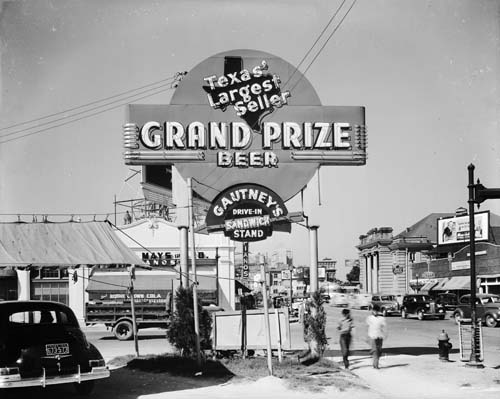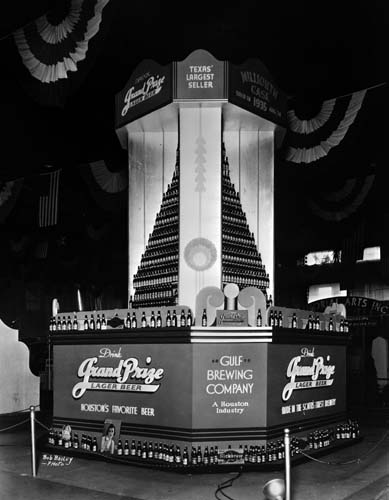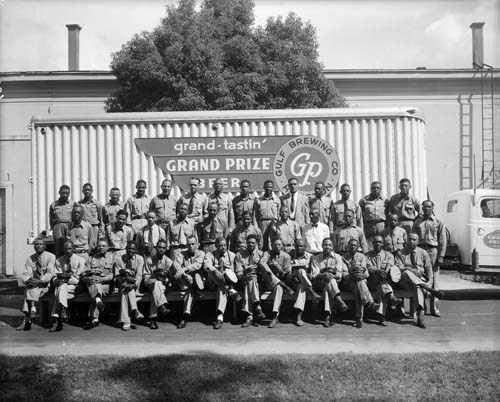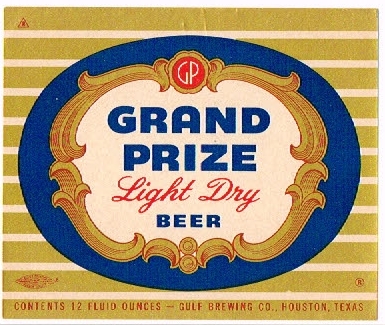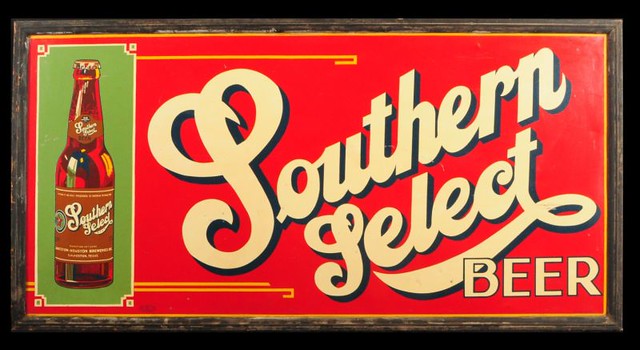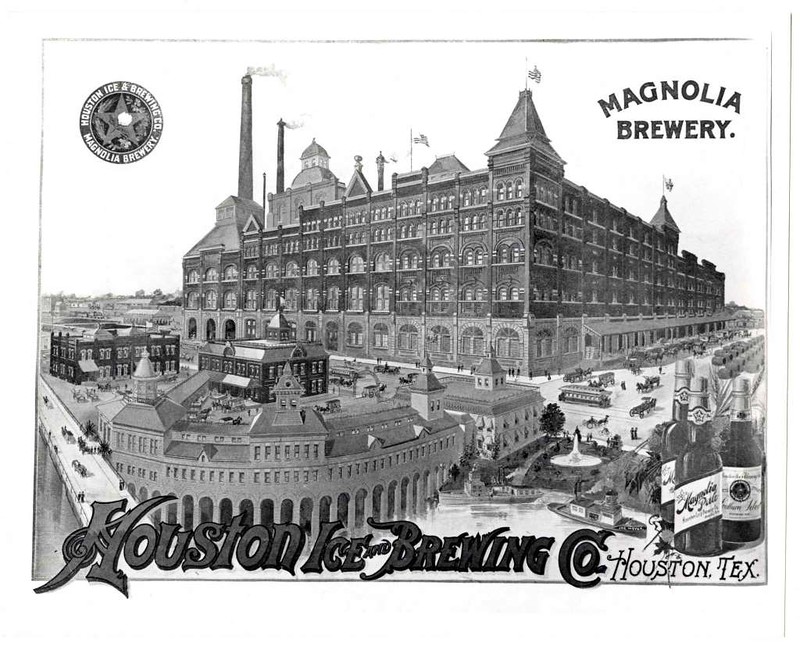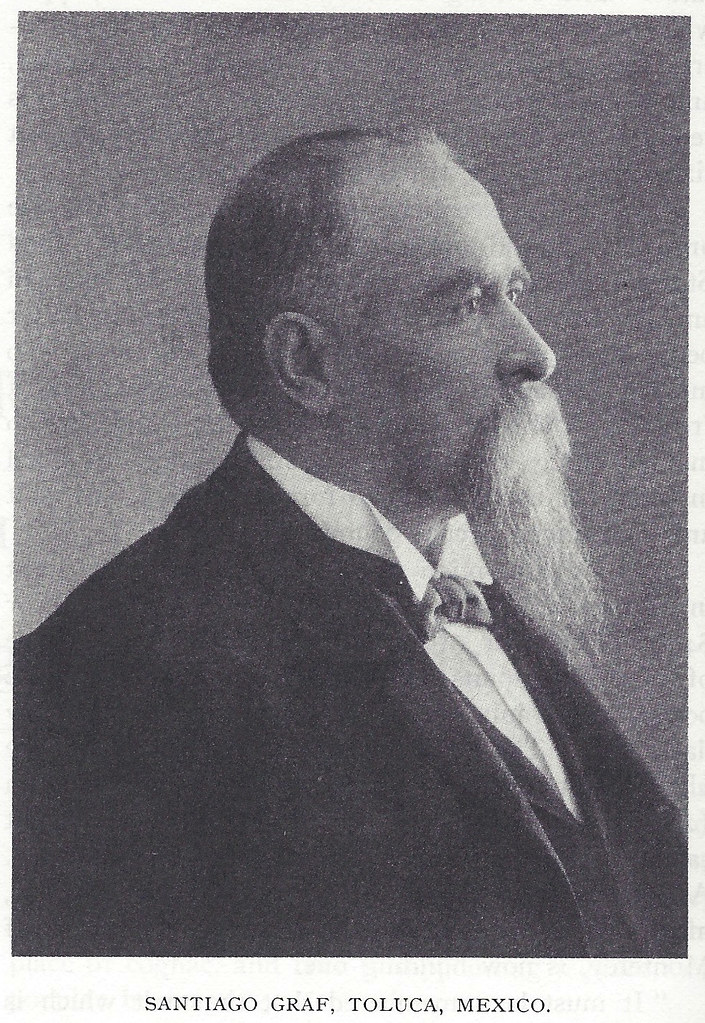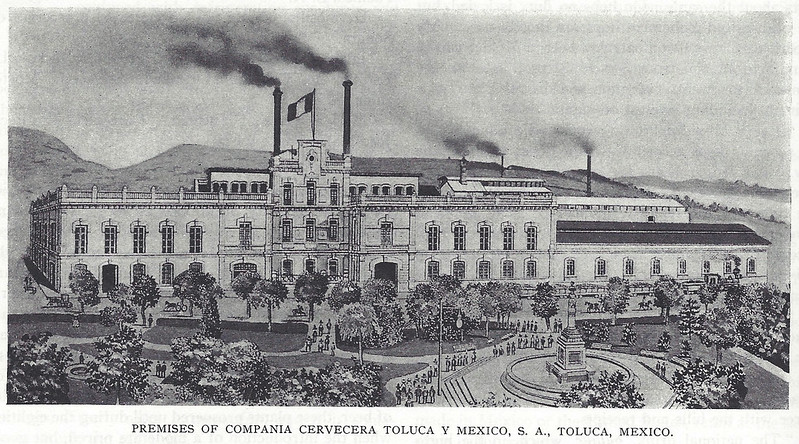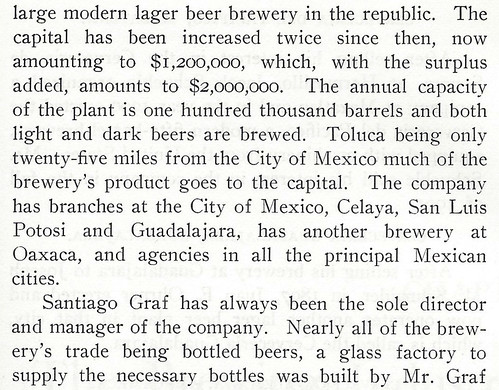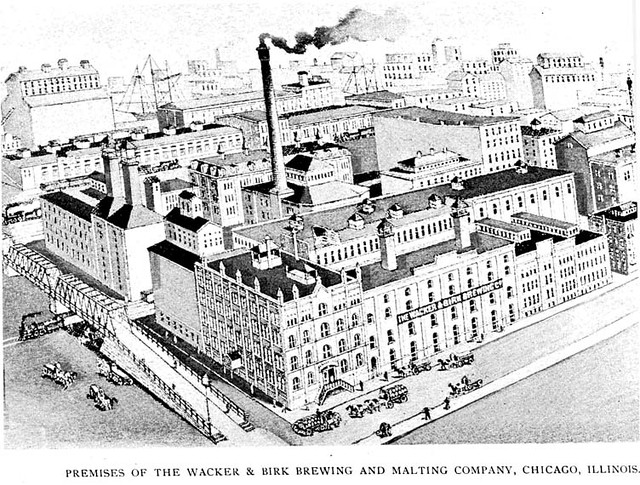![]()

Today is the birthday of Frantz Brogniez (October 26, 1860-October 9, 1935). He was born in Hainaut, Belgium. His father was also a brewmaster and a 25 year member of the Belgian senate in Brussels. He also trained as a brewer at Louvain, and at his first brewing job in Lichterveld in 1882, he created Belgium’s first “blond” beer. Moving to the United States in 1896, he founded the The Belgian Brewery in Detroit Michigan, which was later renamed the Tivoli Brewery. He then moved to Terre Haute, Indiana to found the Peoples Brewery there. Moving to Houston in 1912, he became the brewmaster of the Houston Ice and Brewing Co. Shortly thereafter, at the International Exposition at Ghent, Belgium one of the beers he created in Houston, Southern Select, won the Grand Prize (out of 4,096 beers entered). After that, the brewery became the south’s biggest brewery, but prohibition put Brogniez out of a job. He was also a violin player and co-founded the Houston Symphony. During prohibition, he developed a honey-based ice cream called “Honey Boy Ice Cream,” and also did some brewing in Juarez, Mexico. After prohibition ended, Howard Hughes (yes, that one) persuaded Brogniez to be the brewmaster of his new Gulf Brewing Company in Houston, and he brought his recipe for Southern Select with him, and renamed it “Grand Prize Beer.” He ran Hughes’ brewery until he died in 1935, and afterwards his son Frank took his place at Gulf Brewing. Gulf was acquired by Hamm’s in 1953.
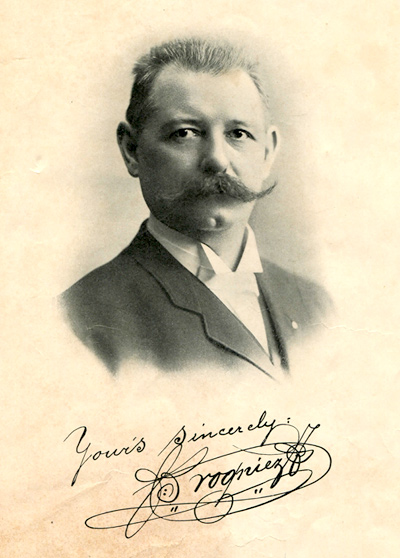
Here’s a biography from Find-a-Grave:
Frantz H. Brogniez was born at the family estate of Redemont, Haine – St. Paul, Belgium on October 26, 1860. He was an accomplished musician, chemist and Brewmaster. He married three times. Frantz first married Cornelie van der Hulst who bore him three children, two girls and a boy, I don’t know the girl’s names, the boy was Willie who died at a young age. They separated for unknown reasons. He then met Alida Mathilde Grymonprez, fell in love and in 1896 moved to the US for a fresh start. Alida bore him two children. They were Frantz (Frank) Philippe and Alida Mathilde. Alida fell sick and passed in 1903. Agreeing to Alida’s dying wishes, Frantz married Alida’s sister Alice Albertine Grymonprez who bore him two sons. They were Fernand Jules and Raymond Hector. Alice was 26 years his junior. Both Alida and Alice are interred here at Forest Park Cemetery with Frantz. Frantz passed away on October 11th 1935, just shy of 75 years, 2 years after Prohibition ended.
Some of Frantz’s accomplishments include winning the world’s Grand Prize for beer while Brewmaster at Houston Ice and Brewing’s Magnolia Brewery in 1913. Also in 1913, Frantz along with Miss Ima Hogg and Mrs. E. B. Parker formed the Houston Symphony. Lastly, Frantz was the original Brewmaster for Howard Hughes’ Gulf Brewery best known for its Grand Prize Beer.
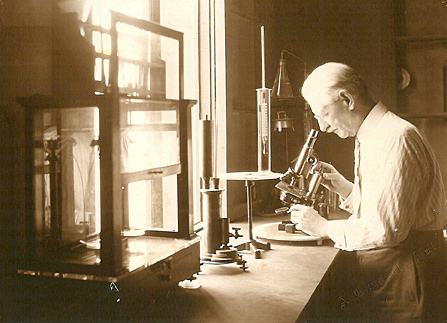
And here’s another short one from Houston Past:
Frantz Brogniez was the Belgian-born brewmaster who turned the Houston Ice and Brewing Company into the largest brewing company south of Milwaukee, and later operated Howard Hughes’ Houston-based Gulf Brewing Company. In 1913, while he was serving as brewmaster at Houston Ice and Brewing, Brogniez beat out 4,096 other brewers around the world to win the Grand Prize at the International Congress ofBrewers. The beer for which was honored was Houston Ice and Brewing’s most popular, Southern Select. During Prohibition, Brogniez moved to El Paso and worked with brewing interests in Juarez. At the end of Prohibition, Hughes coaxed Brogniez back to Houston to oversee the operations of Hughes’ Gulf Brewing Company, which produced Grand Prize beer. Brogniez’ son, Frank, operated the brewery after his father’s death.
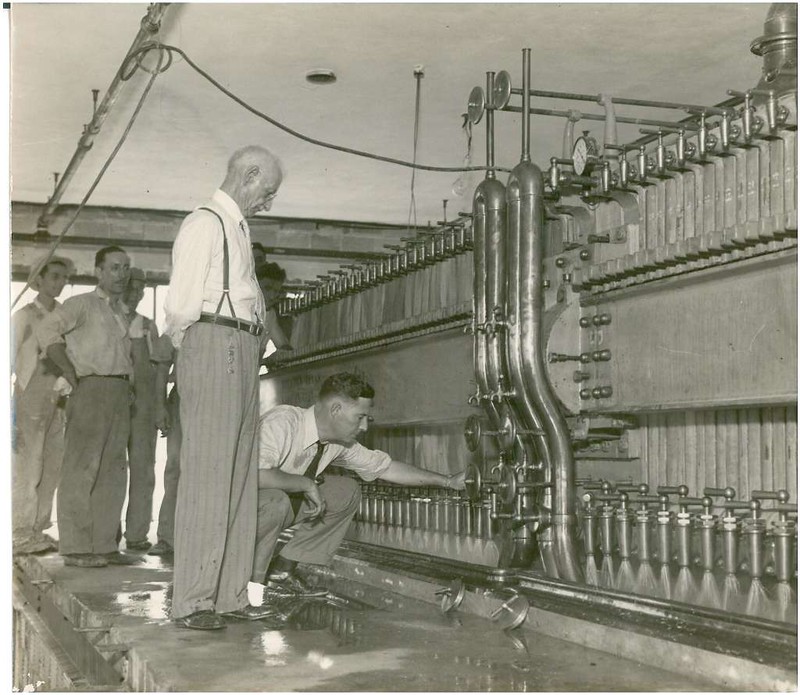
Frantz and his son Frank examining the brewery.
Frantz was born October 26, 1860, at Haine-Saint Paul, in Hainaut, Belgium. His father was a brewmaster and a 25 year member of the Belgian senate in Brussels.
Frantz was one of those rare very gifted and remarkably knowledgeable men, accomplished in bio-chemistry, engineering, music, and well versed in painting, sculpture and poetry. In 1881, Brogniez entered the University of Louvain and enrolled in “Special Sciences,” including engineering and biochemistry. He continued his studies at the Louis Pasteur Institute in France.
In 1882, Brogniez went to Lichterveld to work in a brewery. While there, he developed the first “blond” beer in Belgium.
He moved to Detroit Michigan in 1896 and established The Belgian Brewery. It was quickly renamed the Tivoli Brewery after he took on some investors. He befriended Henry Ford and often went riding with him. Frantz never learned how to drive.
He left Detroit in 1904 and moved to Terra Haute Indiana where he established the Peoples Brewery and supervised its design and construction. It grew to one of the largest in the nation at the time.
In 1912 he moved to Houston for the warmer climate for his chronically ill wife and became the brewmaster for Houston Ice and Brewing’s Magnolia Brewery. A year later they learned of the International Exposition at Ghent Belgium. The Exposition was held every couple of years and was a competition where beer from all over the world was put through a battery of tests. Frantz had some beer grabbed off the line and sent it with a friend that was traveling to Belgium. This particular year 4,096 beers were entered. Out of all these beers, Southern Select was the last one standing with 3 tests still to go. It won the Grand Prize. HI&B became the largest brewing company in the south. Frantz remained with HI&B until Prohibition ended his job.
Also in 1913, Frantz, Mrs. E. B. Parker and Miss Ima Hogg established the Houston Symphony. By this time he was a Mason and an Elk.
While WWI was going on around 1918, sugar was in short supply so Frantz was asked if he could develop a recipe for ice cream using something other than sugar for the sweetener. He developed what became Honey Boy Ice Cream made with honey. It was fairly popular. When WWI ended, the rights were sold to Reddig Ice. Honey Boy disappeared.
During Prohibition Frantz moved to El Paso Texas and brewed beer at Cerveseria Juarez in Juarez, Mexico. Some of these beers were award winners as well.
When it looked as if Prohibition was going to end in 1933, Frantz moved back to Houston where HI&B was trying to get back into the brewing business. It became obvious that HI&B had big plans and not much money. At the same time, Howard Hughes wanted to get into the brewing business thinking it would provide much needed jobs. Mr. Hughes enticed Frantz away from HI&B and formed Gulf Brewing. With little modification to an existing building they quickly installed a state of the art brewing facility of Frantz’s design. Grand Prize beer became a reality. It was named for the Grand Prize that Southern Select won. It was the same recipe as Southern Select. Grand Prize grew to be one of the south’s most popular beers.
Two years later at the age of 75, Frantz passed away in the arms of his son Frank with his family present.
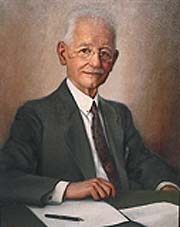
Here’s a basic history of the Houston Ice and Brewing Co., which was also known as the Magnolia Brewery, from Houston Past:
The Magnolia Ballroom building on the Franklin Street side of Market Square (715 Franklin) was built in 1912, on the foundation of an older building (the Franklin Building), and once housed the taproom and executive offices for the Houston Ice and Brewing Co.’s Magnolia Brewery. The building was the first in Houston to have refrigerator-style air conditioning. In 2006, it became the first commercial building in Houston to receive the Houston Protected Landmark designation.
By 1915, the Houston Ice and Brewing Company encompassed more than 10 buildings on more than 20 acres located on both sides of Buffalo Bayou. In fact, the brewery even spanned the bayou for some period of time – the Louisiana Street bridge now crosses the bayou at the same location. To provide easier access across the bayou, the brewery built a 250-foot wood and concrete bridge stretching from the Franklin Street bridge toward the Milam Street bridge.
The Magnolia Brewery produced a number of signature brands of beer, including (it is reported) Magnolia, Richelieu, Hiawatha, Grand Prize, and Southern Select (the latter being the most famous). In 1913, brewmaster Frantz Brogniez was awarded Grand Prize at the last International Conference of Breweries for his Southern Select beer – beating out 4,096 competing brewers from around the world. In 1919, the United States Supreme Court ruled that the labeling on one of the Houston Ice and Brewing Company’s brands did not infringe upon a Schlitz trademark. (Having noted that the similarities in the two bottles were limited to their content and brown labels, the Court stated: “If there were deception it seems to us that it would arise from beer and brown color and that it could not be said that the configuration appreciably helped.”)
The company’s decline began during Prohibition, when the Houston Ice and Brewing Company was forced to rely solely on its ice sales. Many of the brewery’s structures were then destroyed in the historic 1935 flood, which was later blamed on the Magnolia Brewery bridge. The brewery struggled to survive, but closed in 1950.
The Magnolia Ballroom is just one of two Houston Ice and Brewing Company buildings that remains standing. In 1969, a high-end restaurant called the Bismark was located on the second floor, and the Buffalo Bayou Flea Market operated out of the basement. The basement has since housed a variety of bars and clubs. The upstairs floors are currently used for special events – much of the ornate interior of the building has been preserved, and it is decorated with historic photos.
If you want to learn more about the Magnolia Brewery, check out Buffalo Bayou, Peachridge Glass, and the Magnolia Ballroom.
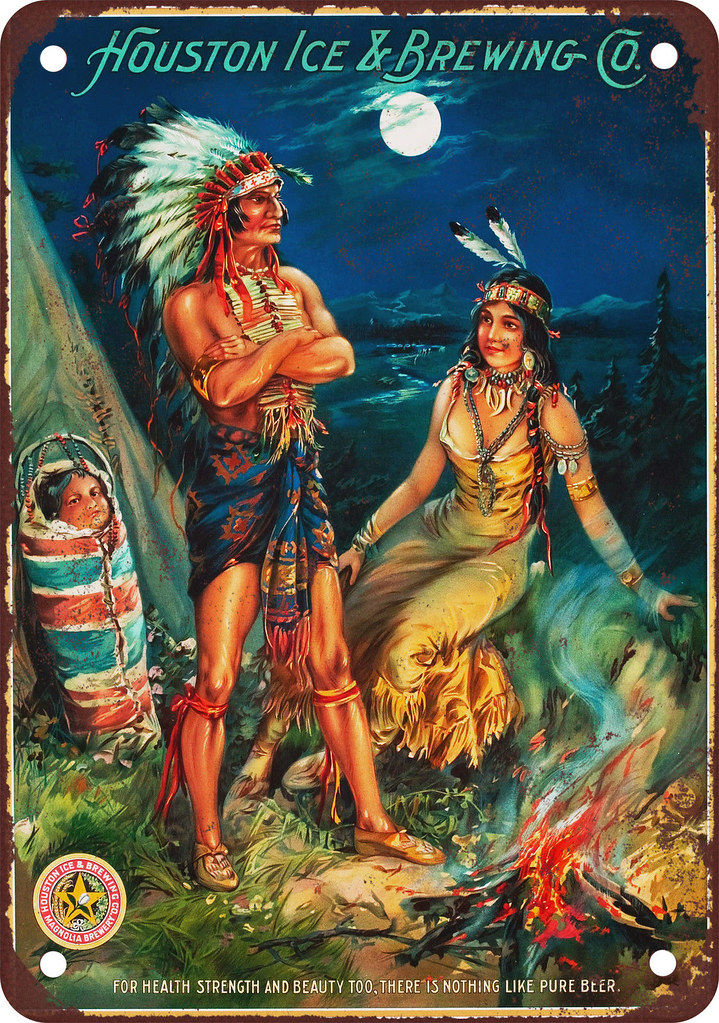
And here’s some more about the Gulf Brewing Co., founded by Howard Hughes, also from Houston Past:
Howard Hughes’ connection with the Houston-based Hughes Tool Company is fairly well-known. It is less well-known that Hughes started a brewery in Houston, on the grounds of the Hughes Tool Company, called Gulf Brewing Company. Hughes opened the brewery at the end of Prohibition, and its profits helped the tool company survive the Depression.
Gulf Brewing Company produced Grand Prize beer, which for a time was the best-selling beer in Texas. It has been reported that a beer called Grand Prize beer was also produced prior to Prohibition, by the Houston Ice and Brewing Company. While that may be accurate, any confusion is likely connected to the fact that Hughes’ Grand Prize brewery was operated by the man who served as brewmaster at Houston Ice and Brewing before Prohibition. In 1913, while he was brewmaster at the Houston Ice and Brewing Company, Belgian-Houstonian Frantz Brogniez was awarded Grand Prize at the last International Conference of Breweries for his Southern Select beer – beating out 4,096 competing brewers. Brogniez left Houston during Prohibition, but Hughes convinced him to return to serve as brewmaster for the Gulf Brewing Company. Brogniez’ son operated the brewery after his father’s death.
